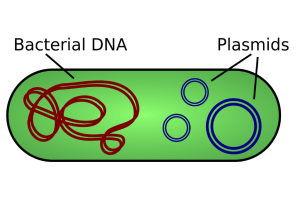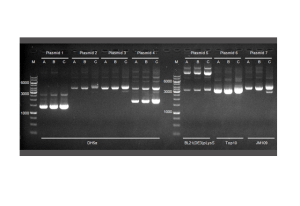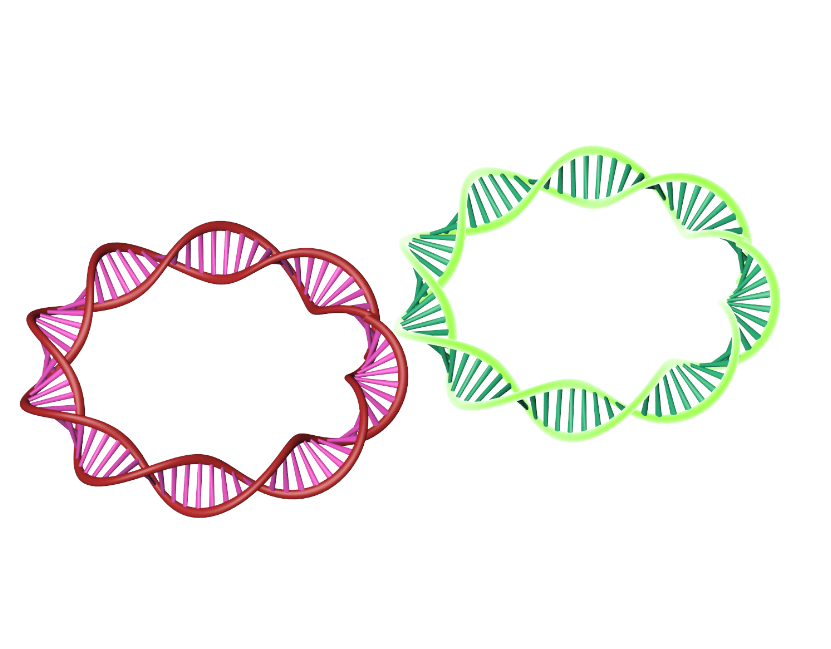Plasmid DNA is an important genetic element in molecular biology. These small, circular molecules exist independently from the main chromosomal DNA, yet they play crucial roles in various biological processes. Plasmid DNA has captivated scientists and biotechnologists, from conferring antibiotic resistance to facilitating gene transfer. In this comprehensive blog post, we will delve into the intricacies of ADN plásmido, exploring its structure, functions, and how it differs from the more familiar chromosomal DNA.
What Is a Plasmid?
ADN plásmido is a small, circular, double-stranded DNA molecule in prokaryotic (bacteria) and eukaryotic (plants and fungi) células. It is separate from the main chromosomal DNA and can replicate independently, a feat that has made it a valuable tool in genetic engineering and biotechnology.

What are the Functions of Plasmid DNA?
ADN plásmido is not just a passive bystander in the cell; it plays numerous crucial roles that contribute to the survival and adaptation of its host organisms. Here are some of the key functions of ADN plásmido:
- Conferring Antibiotic Resistance: Many plasmids carry genes that confer antibiotic resistance on bacteria, allowing them to thrive in environments with these drugs. This characteristic has significant implications for healthcare and the fight against antibiotic-resistant infections.
- Facilitating Horizontal Gene Transfer: Certain types of plasmids, known as conjugative plasmids, enable the transfer of genetic material between bacterial cells. This process, called horizontal gene transfer, contributes to the rapid spread of advantageous traits within bacterial populations, accelerating their evolution and adaptation.
- Enhancing Virulence: Virulence plasmids carry genes that increase bacteria’s pathogenicity, enabling them to produce toxins, adhesive molecules, and other factors that aid in colonization, invasion, and evasion of the host’s immune system.
- Enabling Biodegradation: Degradative plasmids harbor genes that code for enzymes that break down complex compounds, such as hydrocarbons and pollutants. This ability finds applications in bioremediation, where bacteria with these plasmids assist in environmental cleanup.
- Facilitating Ecological Competition: Colicinogenic plasmids (Col plasmids) equip bacteria with bacteriocins, protein toxins that can target and kill closely related bacterial species. This capability provides a competitive edge in microbial communities, allowing bacteria to secure resources and space for their growth.
What is the Structure of Plasmid DNA?
ADN plásmido shares some structural similarities with chromosomal DNA but exhibits distinct characteristics. Like chromosomal DNA, ADN plásmido is a double-stranded circular molecule composed of nucleotides. Sin embargo, unlike chromosomes, ADN plásmido is much smaller in size, typically ranging from a few thousand to a few hundred thousand base pairs.
One key feature of ADN plásmido is the presence of an origin of replication, a specific DNA sequence that allows the plasmid to replicate independently within the host cell. Además, ADN plásmido often contains other genetic elements, such as promoters, which control the expression of genes, and selectable markers, which aid in identifying and selecting cells that have successfully taken up the plasmid.
What Types of Plasmids Exist and What Are Their Roles?
There are several types of plasmids, each with specific roles and functions within bacterial cells. Here are some common types:
- F-Plasmids (Fertility Plasmids): These plasmids drive gene transfer through conjugation, facilitating the exchange of genetic material between bacteria.
- Resistance Plasmids: As the name suggests, these plasmids carry genes that confer resistance to antibiotics, heavy metals, or other environmental stressors, allowing bacteria to thrive in adverse conditions.
- Virulence Plasmids: These plasmids harbor genes that enhance bacteria’s pathogenicity, enabling them to produce toxins, adhesive molecules, and other factors that aid in the colonization and invasion of host organisms.
- Degradative Plasmids: These plasmids carry genes that code for enzymes that break down complex compounds, such as hydrocarbons and pollutants, making them valuable for bioremediation processes.
- Colicinogenic Plasmids (Col Plasmids): These plasmids equip bacteria to produce bacteriocins, protein toxins that can target and kill closely related bacterial species, providing a competitive advantage in microbial communities.
Understanding the diverse types of plasmids and their respective roles is crucial for harnessing their potential in various applications, such as developing new antimicrobial strategies, enhancing bioremediation processes, or studying bacterial pathogenesis.

What are the key differences between Plasmid DNA vs. Chromosomal DNA?
While both ADN plásmido and chromosomal DNA are composed of the same building blocks, there are several notable differences between the two:
- Tamaño: Chromosomal DNA is significantly larger than ADN plásmido, with the former containing millions or even billions of base pairs, while the latter is typically much smaller.
- Location: Chromosomal DNA is found within the nucleus of eukaryotic cells or the nucleoid region of prokaryotic cells, while plasmid DNA is typically located in the cytoplasm.
- Replication: Chromosomal DNA replicates using the cellular machinery and is tightly regulated, while plasmid DNA can replicate independently, often at a higher rate than chromosomal DNA.
- Gene Content: Chromosomal DNA contains the essential genes required for the survival, growth, and reproduction of the organism, whereas plasmid DNA typically carries accessory genes that confer additional advantages, such as antibiotic resistance or metabolic capabilities.
- Herencia: Chromosomal DNA is passed on to daughter cells during cell division, while plasmid DNA can be transferred horizontally between cells, even across different species, through processes like conjugation or transformation.
How is Plasmid DNA used in Biotechnology?
The unique properties of ADN plásmido have made it an invaluable tool in biotechnology and genetic engineering. Scientists often use plasmids as vectors for introducing foreign genes into host cells, enabling the production of recombinant proteins, vaccines, and other biopharmaceuticals. Además, ADN plásmido is widely used in molecular cloning, gene expression studies, and the generation of genetically modified organisms (OGM).
One of the most remarkable applications of ADN plásmido is in producing messenger RNA (ARNm) therapeutics. By utilizing plasmids as templates, scientists can synthesize mRNA molecules encoding specific proteins, which can then be delivered to cells for therapeutic purposes, such as treating diseases or stimulating immune responses.
Conclusión
ADN plásmido is a remarkable genetic element that has captivated scientists and sparked numerous breakthroughs in biotechnology and medicine. Its unique structure, versatile functions, and ability to facilitate gene transfer and expression have made it an indispensable tool in various fields. As we unravel the mysteries of ADN plásmido, we can look forward to exciting developments that could shape the future of healthcare, agriculture, and environmental conservation.
